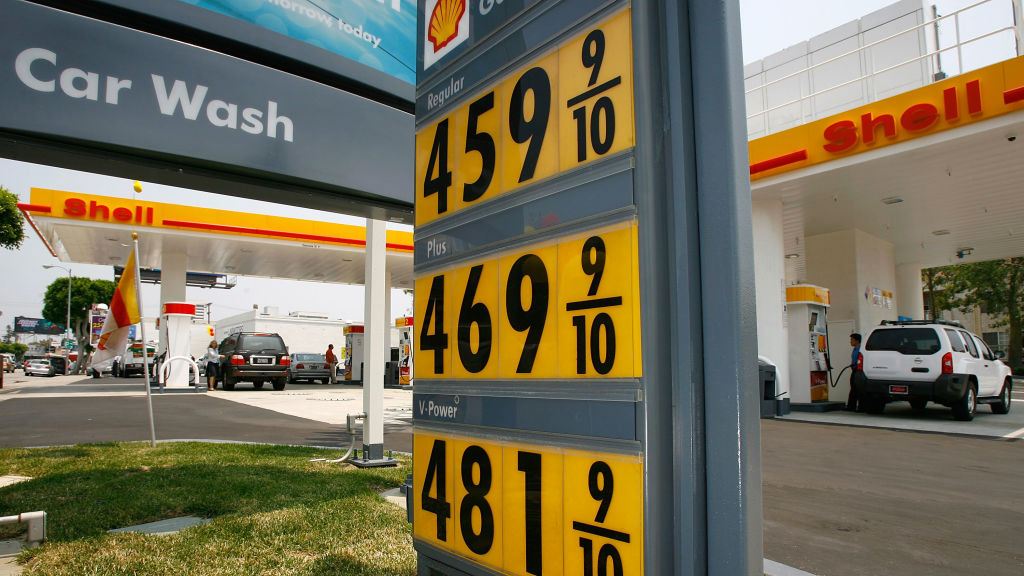Green Energy: AER says renewables are adding to lower power prices, and can hydrogen cars compete with EVs?

Pic: Getty
• Hydrogen won’t beat electric vehicles, BNEF founder claims
• Lion Energy up on hydrogen fuel station deal with China’s Censtar
• AER says renewables are powering cheaper power prices
• SA Wind farms cop penalties, but not blamed for 2016 blackout
Hydrogen fuel cells not beating electric cars, BNEF founder
Michael Liebreich, founder of BloombergNEF and the UK’s green conservative has taken a swipe at oil and gas companies he says are flogging hydrogen in an attempt to delay the inevitable electrification of the power industry.
Speaking to ‘energy transition’ publication Recharge this week, Liebreich accused fossil fuel companies of pushing the idea of hydrogen cars and gas pipeline injection as a Trojan horse to get governments (eg ours) to endorse hydrogen that is not made from renewable sources and slow down the electrification of the passenger transport market.
On top of that he branded hydrogen fuel cell technologies inefficient compared to EVs.
According to Liebreich, hydrogen technologies should be focused on high emissions heavy industries like fertiliser production and refinery processes.
“I don’t know whether it’s disingenuity or a phony war, but we’re talking at cross purposes if we’re using dirty hydrogen [for existing uses], but we’re talking about clean hydrogen [for cars],” he told Recharge.
“If I were a [government] minister, what I would be saying is anytime anybody wants to come through the door and talk about hydrogen… and they want to start making presentations about cars and trucks and trains, I’d be, like, “wait, let me stop you What’s your plan for fertiliser? What’s your plan in your refinery, you’re taking [unabated] natural gas and you’re using it in fertilser or in hydrocracking. What’s your plan [to switch to cleaner hydrogen], but also, what do you need?”
Liebreich does however, note hydrogen is going to be unavoidable for certain industries like aviation, shipping and steel production.
Lion Energy up on hydrogen refuelling deal
That said, plenty of folks believe hydrogen will play a role in the transition of the transport sector as refuelling becomes easier to access.
Shares in Lion Energy (ASX: LIO) soared on news it planned to do just that, announcing an MoU to bring Chinese gas station equipment manufacturer Censtar into the Australian market.
Lion will “jointly explore opportunities” in testing and operating hydrogen dispensers in Australia with Censtar, which operates 19 such stations in its homeland.
Lion exec chair Tom Soulsby said the company views future demand for the equipment as “significant”.
“We welcome the opportunity to cooperate with Censtar and we will start by assisting Censtar obtain relevant regulatory approvals for their hydrogen refuelling and related equipment in Australia,” he said.
“Lion believes that the demand for such equipment will be significant and believes that developing relationships to secure preferential supply to support Lion’s Green Hydrogen strategy makes a lot of sense.”
Lion Energy share price today:
Renewables back fall in power prices: AER
The Australian Energy Regulator has credited the uptake of renewable generation as the number one driver behind a 58% reduction in wholesale energy prices in 2020.
Releasing its State of the Energy Market 2021 report today, also noted lower coal and gas prices and milder temperatures over summer played a role, with the average price across jurisdictions in National Electricity Market falling below $70/MWh for the first time since 2015.
A record 3662 instances of negative spot prices occurred across 2020, with uptake of rooftop solar driving record low levels of minimum grid demand in South Australia and Victoria.
AER chair Clare Savage said the role of regulatory bodies like hers was to ensure the reliability of the system as the transition to renewables and decentralisation of the grid continues to take shape, with 50GW of large scale wind and solar and 24GW of rooftop solar expected to come online over the next two decades.
“The NEM is moving rapidly from a centralised system of large coal and gas generation towards a mixture of smaller scale, widely dispersed wind and solar generators, grid scale batteries, and consumers having more control over how and when they use energy,” she said.
“In 2020, more than 3,700 megawatts (MW) of new large scale wind and solar generation capacity entered the market driving record levels of wind and solar generation, with output from wind generation exceeding gas generation across the NEM for the first time.
“Over the next two decades, 16 gigawatts (GW) of thermal generation, 61% of the current coal fleet in the NEM, is expected to retire, while over the same period up to 50 GW of new large scale wind and solar capacity is forecast to come online, along with up to 24 GW of rooftop solar photovoltaic (PV) capacity.”
Around 17% of total generation capacity in the NEM is rooftop solar, accounting for around 6.4% of the market’s total electricity requirements last year.
The report did however, praise the role of coal and gas in providing inertia and system strength that help stabilise the grid, something Tesla claims you could do without if you build enough batteries.
It noted South Australia, which supplied almost 60% of its electricity needs through renewables in 2020, was the main focus of system security directions from the AEMO.
According to figures from the CSIRO listed in the report, new wind and solar is cheaper to build and run than other forms of power generation, with an upper limit of $90/MWh, including storage and transmission costs.
Black and brown coal come in at $90-140/MWh, and a head turning $170-300/MWh with carbon capture and storage, while gas generation is estimated at $70-120/MWh.
New Deputy PM Barnaby Joyce meanwhile backed the building of new coal and nuclear power stations in a Sky News interview with Alan Jones, designed as a series of dorothy dixers asked and answered at ever increasing volume.
He backed up his claim that we need to build more coal power (actually words put into his mouth by Jones and something that hasn’t been achieved by commercial ends in Australia since 2012), by making an entirely different point about export earnings.
Wind farms cop fines but avoid blame for 2016 blackouts
Speaking of South Australia, two farms at Hornsdale (owned by Neoen) and Clements Gap (Pacific Hydro) have copped a combined $1.6 million in penalties related to compliance breaches from 2016, around the time of the big SA blackouts.
Both related to using safety settings that were not approved by the AEMO which activate to prevent damage during times of system disturbances.
They are the second and third wind farms to take an L from the use of non-approved settings after Tilt was ordered to pay $1m for compliance issues related to its Snowtown 2 wind farm.
However, the AER dropped an allegation that the the activation of the Repeat LVRT Protection Systems which caused the generating units to cease generating active power contributed to the blackout which occurred in South Australia on September 28, 2016, sparking a political firestorm about the State’s reliance on wind power.
Related Topics

UNLOCK INSIGHTS
Discover the untold stories of emerging ASX stocks.
Daily news and expert analysis, it's free to subscribe.
By proceeding, you confirm you understand that we handle personal information in accordance with our Privacy Policy.








